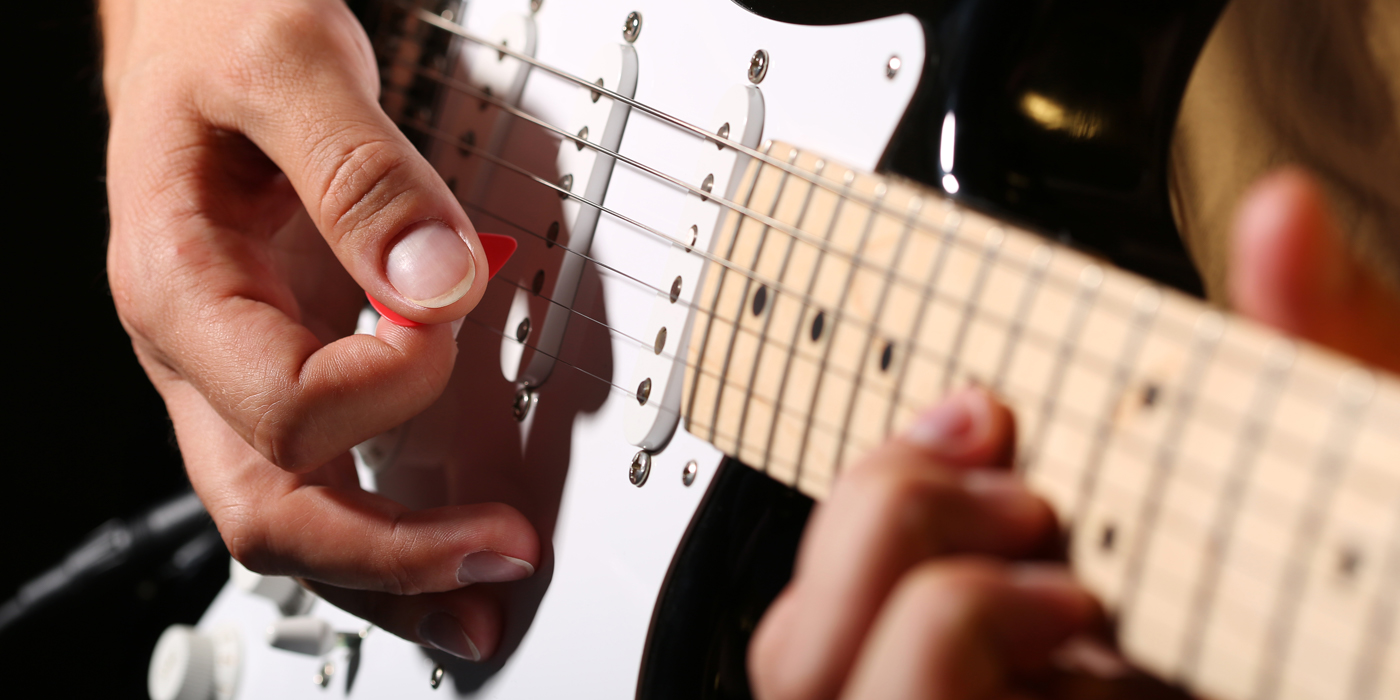
Life can be difficult for a guitar player in high school jazz band. Band directors don’t always provide clear direction. They often leave it up to the guitarist to make stylistic interpretations and tone decisions without any guidelines. When a budding guitarist is first introduced to jazz and big band music, how do they prioritize what to work on so that they can become an effective part of the ensemble?
There are a million places to start, but one obvious (yet frequently overlooked) area is sound. Many times the guitarist is so concerned with reading notes and rhythms and learning new chord shapes that they neglect to set up their guitar and amp to create a decent sound that is stylistically appropriate. Here are some tips to help your students create a jazz guitar sound.
Setup
It all starts with having the guitar set up properly to get a solid jazz tone. We’ll assume the student is using a cheap solid body guitar (i.e. non-American made Fender Stratocaster) with less than stellar components because it is a very common setup for beginners. This already puts a young guitarist at a disadvantage, but a little tweaking goes a long way to get a serviceable sound!
Another important tone shaping tool is string gauge. Slightly thicker strings will go a long way towards fattening up the sound. Light or medium gauge strings (.010 or .011 size E string) are a good place to start, just make sure to have the truss rod on the guitar adjusted if making a significant change.
Setting Knobs and Switches
To get the most out of any gear, it is best to start with the guitar’s volume and tone knobs both at 5, or halfway up. Every young guitarist defaults to turning all the knobs on the guitar all the way up, and it can be a tough habit to break. Starting with the controls half way up provides the headroom to alter the instrument’s volume and tone and also adds a little natural compression so that when strumming with more force you don’t get that “icepick” treble-laden sound of 60s surf music.
Pickup selection is also important in creating the desired sound. For traditional jazz rhythm guitar, make sure the guitarist is selecting the neck pickup with the pickup selector switch. It has a much darker and deeper tone than its brighter counterpart, the bridge pickup. This will produce a warmer, more idiomatic sound, even if you happen to be playing on a Fender Stratocaster or similar instrument.
Guitarists have to remember to keep the guitar volume knob at 5 before adjusting ANYTHING on the amplifier. This will take some time to get used to and can’t be emphasized enough. Next, adjust the amp to reach the desired volume, keeping the amp’s Bass, Middle, and Treble knobs at around 5. This may sound oversimplified but it really is the best place to start.
Once the electronics are in order, it is time to look at where the guitarist’s hands are and how they are approaching the instrument.
Hand Placement
The picking hand should be right over the neck pickup or even approaching the neck itself. This will mirror the deep, full sound of the neck pickup. Picking closer to the bridge results in a thinner, brighter sound. The picking motion should be nice and smooth and should strike all six strings, using the left hand to mute the strings not being played in the chord. This can be done with both the thumb and/or any other left-hand finger not being used to fret a string.
Chord Voicings and Locking In
The next component of sound is how the guitarist voices chords on the instrument. It is very common to see “slash” marks in lieu of fully voiced chords on guitar parts, so how does the guitarist go about deciding what notes to play?
Freddie Green, the guitarist from the Count Basie Orchestra, commonly played only two or three notes to help fill out the harmony. This approach helped him stay out of the way of the rest of the band. At the same time, his main priority was locking in with the rest of the rhythm section to create a cohesive sound together. This should be the goal of guitarists in traditional jazz band charts as well.
In addition, listening to guitarists like Freddie Green will put students on the right path for tone, style, and more. The guitarist is most effective in traditional jazz band when playing with a full warm sound, small chord voicings, and focusing on locking in rhythmically with the rest of the rhythm section.
Listening
To conclude, the guitarist has to LISTEN because they have so many interpretive decisions to make constantly in jazz band. It becomes easier and more automatic with experience, but it takes some time to acclimate to what the guitarist’s role is in the big band when there isn’t always an obvious answer. This all starts with sound and style, so making sure the guitarist has their electronics set up correctly is a big part in being successful. Make sure they are listening to the rest of the rhythm section and working together with the bass and drums to create a cohesive sound together.
Lastly, let them know it is ok to lay out when they aren’t sure what to do! It’s like the Hippocratic Oath; they should strive to do no harm.